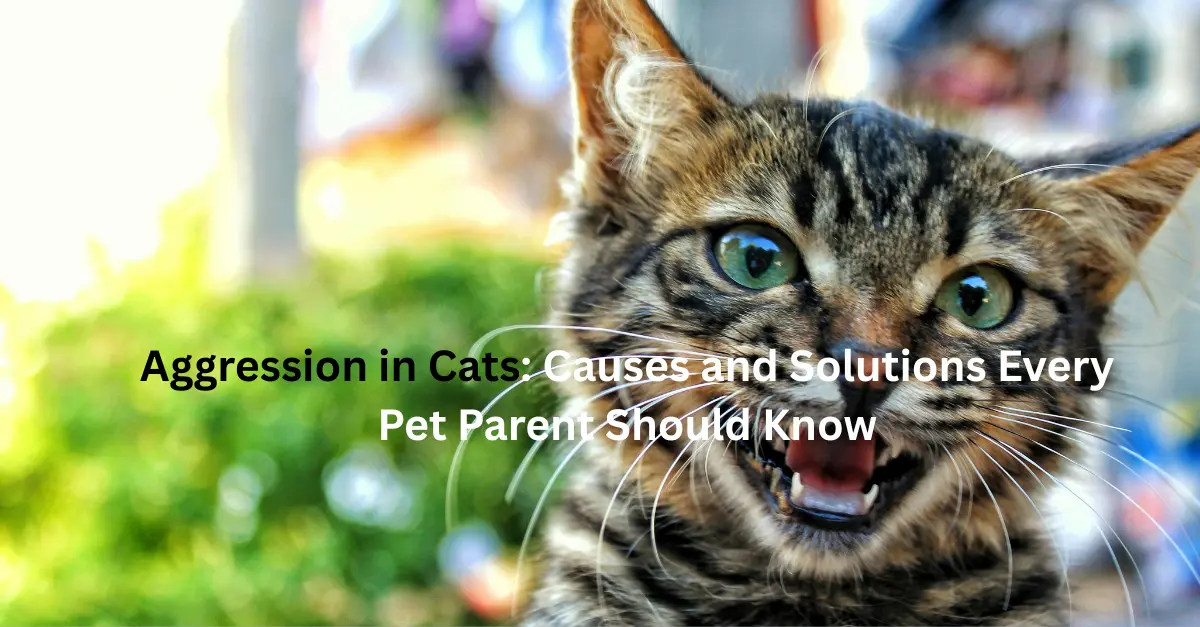Cats are usually seen as calm, affectionate, and playful companions. But sometimes, even the sweetest cat can show sudden aggression scratching, hissing, or even biting. If you’ve ever wondered why your cat acts this way, you’re not alone. Aggression in cats is more common than many pet parents realize, and understanding the causes is the first step toward finding a solution.
In this blog, we’ll explore the main reasons behind feline aggression, the different types of aggressive behavior, and effective solutions to manage and reduce it.
Why Do Cats Become Aggressive?
Aggression is a natural behavior in cats, but when it becomes frequent or intense, it can cause stress for both the cat and its owner. Here are the most common causes:
Fear or Stress
Cats will attack if threatened or scared. Sudden sounds, strangers, new animals, or unexpected movement will lead to defensive aggression.
Territorial Behavior
Cats are very possessive about their territory. If another pet or animal encroaches in their territory, they will become aggressive in defense of their territory.
Play Aggression
Kittens and mature cats are usually rough while playing, biting or scratching one another. With no training, this play aggression can carry over into adulthood.
Redirected Aggression
At other times, the cat is unable to access the source of its frustration — e.g., an outside cat in the window — so it takes out its ire on whomever is available, including humans.
Medical Issues
Disease or pain make cats irritable. Arthritis, dental discomfort, or infections may cause abrupt aggression. Always consider health problems with a vet check.
Maternal Aggression
Mother cats will be very protective of kittens and can bite or hiss when they feel their babies are at risk.
Types of Aggression in Cats
- Having knowledge about the type of aggression can help determine the right solution:
- Defensive Aggression → Ears laid back, body lowered, hissing.
- Offensive Aggression → Ears forward, tail up, lunges towards target.
- Predatory Aggression → Stalks and pounces on moving objects or prey-type behaviour.
- Solutions to Manage Aggression in Cats
Now that we understand why cats become aggressive, here are solutions to calm your cat:
Identify Triggers
Observe when and why your cat is aggressive. Is it during playtime, when guests visit, or when another cat visits the house? Identifying triggers avoids them.
Provide a Safe Space
Cats need a quiet, stress-free area where they can retreat. Provide a cat tree, comfortable bed, or an individual room to reduce nervousness.
Play Therapy
Use interactive toys like feather wands, laser pointers, and puzzle feeders to channel excess energy. Playtime reduces boredom and aggression.
Avoid Punishment
Never hit, yell at, or punish an aggressive cat. This enhances aggression and also enhances fear. Reward with food and praise instead.
Gradual Introductions
New pets should be introduced gradually. Scent exchange and supervised interactions can be used to reduce territorial aggression.
Reduce Stress
Maintain a regular routine, minimize loud noises, and use calming products like pheromone diffusers (Feliway). Stress management can considerably reduce aggression.
Medical Check-Up
If aggression suddenly arises, go visit a vet. Disease or discomfort is most likely the reason why naughty behavior would suddenly emerge.
Professional Help
For severe cases, consult a cat behaviorist or trainer who specializes in aggression management.
Cat aggression is frustrating, but it’s generally a cue that your cat is scared, stressed, or ill. When you understand the causes and apply the proper remedies — from providing safety zones to seeing a physician you can make your cat feel safer and more at ease.
Keep in mind: patience, consistency, and compassion are key. With the proper attitude, most cats can be coaxed out of their aggressive attitudes and back to being wonderful companions we love.

